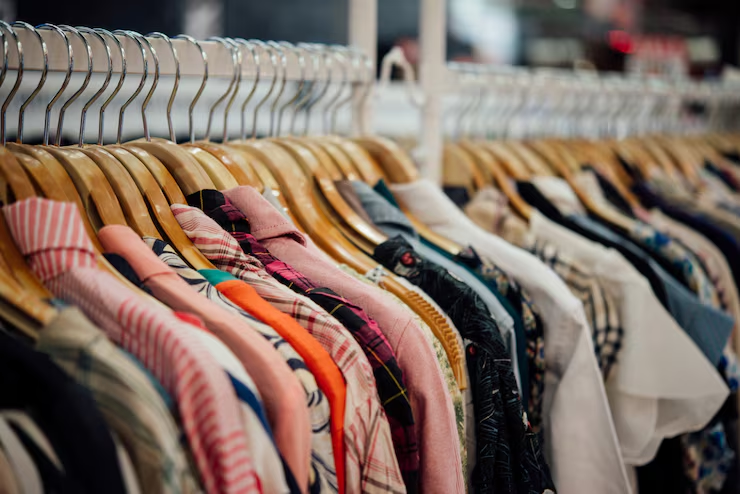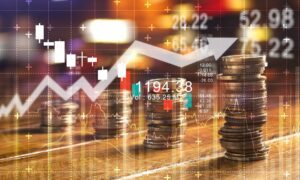Introduction:
In today’s fast-evolving fashion ecosystem, the used clothing industry has become a powerhouse of sustainability and affordability. With consumers increasingly aware of the environmental impact of fast fashion, demand for second-hand apparel continues to soar globally. From local thrift stores to international exporters, one business model stands out for its efficiency and profitability—clothing in bales.
The term “clothing in bales” refers to bulk packages of used clothing that are sorted, graded, and compressed into compact bundles for resale. These bales are the backbone of the second-hand apparel trade, making it easier for wholesalers, resellers, and retailers to access large quantities of quality garments at affordable prices.
What Is Clothing in Bales?
Clothing in bales are large, compressed packages of used garments that have been sorted and categorized according to quality, style, and market demand. The clothing is tightly packed into bales to reduce space and transportation costs, allowing suppliers to ship and store them efficiently.
Typically, each bale of clothing can weigh between 45 kg to 100 kg, depending on the buyer’s requirements and the region’s market standards. These bales are usually wrapped in plastic or fabric coverings and secured with metal or plastic straps to maintain compactness during shipping.
Suppliers often classify bales into different grades:
- Grade A: Premium quality garments, nearly new, often suitable for boutique resale.
- Grade B: Gently used clothing with minor signs of wear, ideal for thrift stores.
- Grade C: Basic used clothing for markets with high demand but lower price points.
Some suppliers, such as Indetexx, also offer Customized Clothing Bales, allowing businesses to select specific clothing categories—like jeans, dresses, jackets, or children’s wear—according to their target market.
Main Benefits of Buying Clothing in Bales
1. Cost Savings and Higher Profit Margins
The foremost advantage of purchasing used clothing bales is the significant cost reduction. By buying in bulk, businesses eliminate the high expenses associated with sourcing individual pieces. This model enables wholesalers and retailers to enjoy higher profit margins by reselling garments at a marked-up rate.
Compared to sourcing from local thrift collections or smaller resellers, clothing in bales offers a much lower per-item cost. Businesses can invest in larger inventories at once, ensuring steady cash flow and a competitive edge in the market.
2. Product Variety and Consistent Supply
Used clothing businesses thrive on variety, as consumers look for unique pieces and affordable options. Bales typically include a diverse range of apparel, such as jeans, t-shirts, dresses, and accessories—giving resellers the ability to cater to multiple market segments.
Furthermore, reputable suppliers like Indetexx ensure a consistent and reliable supply chain. This helps businesses avoid stock shortages, especially during high-demand periods. With a constant flow of fresh inventory, retailers can regularly update their offerings and attract repeat customers.
3. Easy Logistics and Storage
Transporting and storing thousands of individual garments can be complex and costly. However, bale packaging simplifies logistics. Since the clothes are compressed and tightly packed, they require less storage space and are easier to handle during shipping.
For exporters and importers, this translates into lower freight costs and reduced warehouse overheads. Many suppliers even offer flexible bale sizes and customized packaging options to meet specific logistical requirements. This makes it easier for both small-scale retailers and large distributors to manage their supply chains effectively.
4. Eco-Friendly and Sustainable Choice
The second-hand clothing trade is inherently sustainable, and clothing in bales further enhances its environmental benefits. Every ton of reused clothing helps reduce textile waste, water consumption, and carbon emissions.
By purchasing bale of clothing, businesses actively contribute to a circular fashion economy—where garments are reused and recycled rather than discarded. This sustainability-driven model not only benefits the planet but also appeals to modern consumers who value eco-conscious brands.
As sustainability becomes a key marketing factor, businesses dealing in second hand clothes bale are positioning themselves as responsible and ethical enterprises—aligning with global trends toward green consumerism.
How to Choose a Reliable Supplier
Selecting a trustworthy supplier is crucial for any used clothing business. Poorly graded or inconsistent quality can damage your brand’s reputation and profitability. Here are key factors to consider when sourcing clothing in bales:
- Quality and Grading System
A dependable supplier should provide clear information about their grading process and allow quality inspections or sample requests. Make sure the supplier follows international sorting standards to ensure product consistency.
- Experience and Market Reputation
Choose a supplier with a proven track record in exporting used clothing bales. Years of industry experience often translate to better product knowledge, quality control, and customer satisfaction.
- Customization Options
Look for suppliers offering Customized Clothing Bales. This allows you to tailor your order based on regional demand, seasonal trends, or business niche—such as vintage fashion, streetwear, or children’s wear.
- Transparent Pricing and Documentation
Ensure that the supplier offers transparent pricing, proper export documentation, and fair shipping rates. Reliable partners provide complete transparency in costs, ensuring there are no hidden fees.
- Sustainability and Ethical Sourcing
Partner with companies that prioritize ethical collection and recycling practices. This not only supports environmental goals but also enhances your brand’s credibility.
One standout supplier meeting all these criteria is Indetexx—a globally recognized name in the used clothing export industry. As a reliable clothing in bales supplier, Indetexx is known for its high-quality grading, sustainable operations, and ability to deliver customized clothing bales that match each client’s unique business needs.
Why Indetexx Stands Out
Indetexx has built its reputation by providing premium-grade used clothing bales to clients across Africa, Asia, and South America. Their strength lies in their:
- Advanced sorting technology, ensuring top-quality garments.
- Customized bale solutions, tailored to regional fashion demands.
- Eco-conscious collection and recycling systems, reducing textile waste.
- Efficient global logistics, ensuring timely delivery and competitive freight rates.
Whether you’re a startup thrift retailer or an international wholesaler, Indetexx provides the expertise, transparency, and dependability that make scaling your used clothing business easier and more profitable.
Conclusion: Partnering for a Sustainable and Profitable Future
In the fast-growing second-hand fashion industry, investing in clothing in bales is undeniably one of the smartest moves a used clothing business can make. From cost savings and simplified logistics to sustainability and variety, the benefits are immense.
However, success largely depends on partnering with a trusted and experienced supplier. Companies like Indetexx have set the benchmark for reliability, quality, and ethical sourcing—helping businesses build a sustainable future while maximizing profitability.
By choosing a reliable clothing in bales supplier, you ensure that your business remains competitive, your customers stay satisfied, and your operations align with the global shift toward sustainability.





























